This year, we have welcomed twenty new members to our Advisory Board. Learn about each member below.
Read the collection of high-impact articles from our new members: https://rsc.li/advisoryboard2020 Free to access until 21st August.
This year, we have welcomed twenty new members to our Advisory Board. Learn about each member below.
Read the collection of high-impact articles from our new members: https://rsc.li/advisoryboard2020 Free to access until 21st August.
We’re celebrating the upcoming 20th anniversary of aggregation-induced emission (AIE), a term which was first coined in 2001. We’ve put together a collection of key AIE articles published in RSC journals. Here are the articles in the collection from ChemComm, including the very first AIE article!
Aggregation-induced emission of 1-methyl-1,2,3,4,5-pentaphenylsilole
Ben Zhong Tang et al
Chem. Commun., 2001, 1740–1741
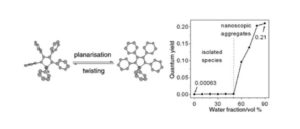
A conical intersection model to explain aggregation induced emission in diphenyl dibenzofulvene
Quansong Lia and Lluís Blancafort
Chem. Commun., 2013, 49, 5966
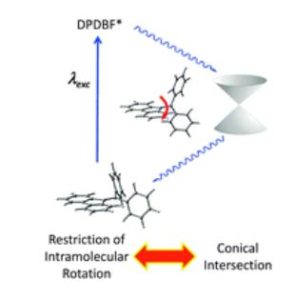
Diarylboryl-phenothiazine based multifunctional molecular siblings
Kalluvettukuzhy K. Neena, Pakkirisamy Thilagar* et al.
Chem. Commun., 2017, 53, 3641-3644

Aggregation-induced emission in precursors to porous molecular crystals
Zhenglin Zhang, Ognjen Š. Miljanić* et al.
Chem. Commun., 2017,53, 10022-10025
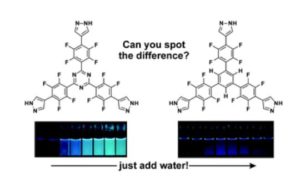
A cyanine-based fluorescent cassette with aggregation-induced emission for sensitive detection of pH changes in live cells
Mingxi Fang, Haiying Liu* et al.
Chem. Commun., 2018,54, 1133-1136
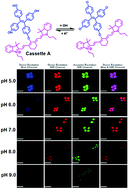
AIE-active micelles formed by self-assembly of an amphiphilic platinum complex possessing isoxazole moieties
Takehiro Hirao,Takeharu Haino* et al.
Chem. Commun., 2020,56, 1137-1140

A self-delivery DNA nanoprobe for reliable microRNA imaging in live cells by aggregation induced red-shift-emission
Zhe Chen, Leilei Tian* et al.
Chem. Commun., 2020,56, 1501-1504
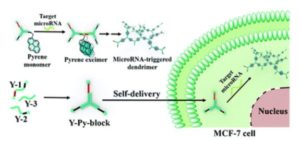
A light-up probe with aggregation-induced emission characteristics (AIE) for selective imaging, naked-eye detection and photodynamic killing of Gram-positive bacteria
Guangxue Feng, Bin Liu* et al.
Chem. Commun., 2015, 51, 12490-12493
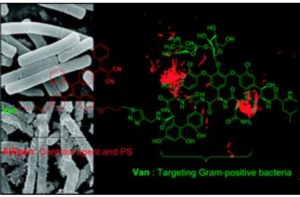
Rational design of substituted maleimide dyes with tunable fluorescence and solvafluorochromism
Yujie Xie, Rachel K. O’Reilly et al.
Chem. Commun., 2018,54, 3339-3342
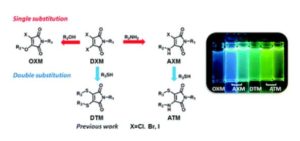
We are proud to announce that Dr. Chenfeng Ke, at Dartmouth College, is the recipient of this year’s Cram Lehn Pedersen Prize in Supramolecular Chemistry! This prize, sponsored by ChemComm, is named in honour of the winners of the 1987 Nobel Prize in Chemistry and recognises significant original and independent work in supramolecular chemistry. Our warmest congratulations to Chenfeng, a well-deserved winner!
“The CLP prize was envisioned to recognize young investigators in the field of supramolecular chemistry. In his short career, Professor Chenfeng Ke has shown outstanding creativity in the development of 3D-printed mechanically interlocked monoliths. He has also discovered transformations of fluorescent supramolecular networks and their guest-induced expansion. These and other innovations show that Professor Ke is a premier supramolecular chemist.” – Roger Harrison, Secretary of the ISMSC International Committee
Chenfeng received his PhD in Supramolecular Chemistry from Nankai University in 2009. The Ke Functional Materials Group focuses on developing smart materials for 3D/4D printing applications, elastic crystalline porous organic materials for energy and environmental related applications, and carbohydrate receptors for biological applications. The research scheme overlaps organic synthesis, crystal engineering, polymer synthesis, materials characterization, and 3D printing, with an emphasis on the design of supramolecular materials that are noncovalently assembled.
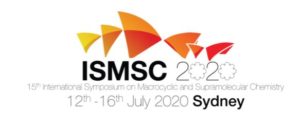
The award will be presented at the 15th International Symposium on Macrocyclic and Supramolecular Chemistry held in Sydney, 12 – 16th July 2020!
This annual conference consists of sessions of invited lectures that focus upon a single topic area, award lectures and poster sessions. The conference will also feature emerging investigator talks.
You can register here.
The International Committee of the International Symposium on Macrocyclic and Supramolecular Chemistry is pleased to invite nominations for the Cram Lehn Pedersen Prize for young supramolecular chemists.
The Cram Lehn Pedersen Prize, named in honor of the winners of the 1987 Nobel Prize in Chemistry, will recognise significant original and independent work in supramolecular chemistry.
Those who were awarded their PhD on or after 1st January 2009 (or who have an award of PhD date together with allowable career interruptions* that would be commensurate with award of their PhD on or after 1st January 2009) are eligible for the 2020 award. The winner will receive a prize of £2000 and free registration for the ISMSC meeting in Sydney, Australia. In addition to giving a lecture at ISMSC, a short lecture tour will be organized after the meeting in consultation with the Editor of Chemical Communications, the sponsor of the award.
Nomination Details
You may nominate yourself, but a nomination letter is recommended. Nomination materials should include: CV, list of publications (divided into publications from your PhD and post-doc, and those from your independent work), and be sent to Prof. Roger Harrison (ISMSC Secretary) at roger_harrison@byu.edu by 31st December 2019.
*Allowable career interruptions include primary caregiver’s responsibilities, illness, disability or parental leave and must be outlined in a cover letter with supporting documentation. See https://www.chem.byu.edu/faculty-and-staff/resources/international-symposium-on-macrocyclic-and-supramolecular-chemistry/awards/ for specific details.
We are pleased to welcome nominations for the 2020 Emerging Investigator Lectureship for ChemComm.
All nominations must be received by Friday 29th November 2019.
ChemComm Emerging Investigator Lectureship
• Recognises emerging scientists in the early stages of their independent academic career.
• Eligible nominees should have completed their PhD in 2012 or later. Appropriate consideration will be given to those who have taken a career break or followed a different study path.
Lectureship details
• The recipient of the lectureship will be invited to present a lecture at three different locations over a 12-month period, with at least one of these events taking place at an international conference.
• The recipient will receive a contribution of £1500 towards travel and accommodation costs for their lectures, as well as a certificate.
• The recipient will be asked to contribute a review article for the journal.
How to nominate
Self-nomination is not permitted. Nominators must send the following to the editorial team via chemcomm-rsc@rsc.org by Friday 29th November 2019.
• Recommendation letter, including the name, contact details and website URL of the nominee.
• A one-page CV for the nominee, including a summary of their education, dates of key career achievements, a list of up to five of their top independent publications, total numbers of publications and patents, and other indicators of esteem, together with evidence of career independence.
• A copy of the candidate’s best publication to date (as judged by the nominator).
• Two supporting letters of recommendation from two independent referees. These should not be someone from the same institution or the candidate’s post doc or PhD supervisor.
• The nominator and independent referees should comment on the candidate’s presenting skills.
Incomplete nominations or those not adhering to the above requirements will not be considered, and nominees will not be contacted regarding any missing or incorrect documents.
Selection procedure
• The editorial team will screen each nomination for eligibility and draw up a shortlist of candidates based on the nomination documents provided.
• The recipient of the lectureship will then be selected and endorsed by a selection panel composed of members of the ChemComm Editorial Board. The winner will be announced in the first half of 2020.
NB: Please note that members of the selection panel from the ChemComm Editorial Board are not eligible to nominate, or provide references, for this lectureship.
For any queries, please contact the editorial team at chemcomm-rsc@rsc.org.